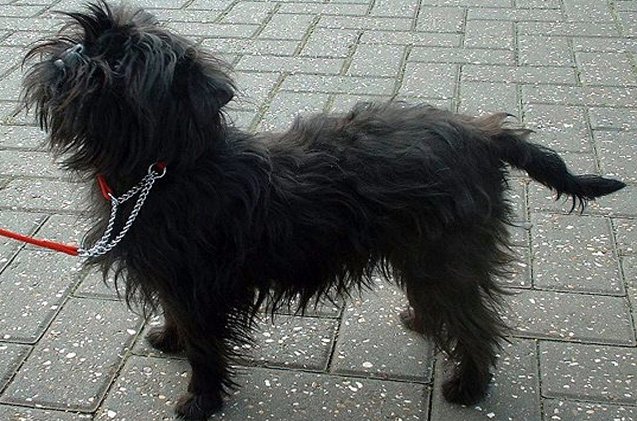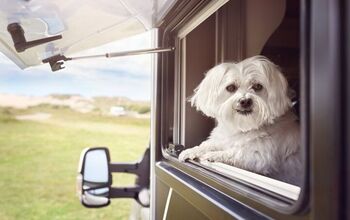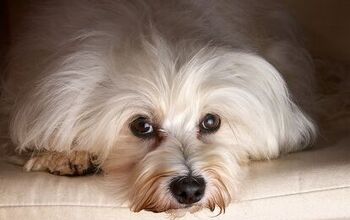Affenpinscher


About Affenpinscher
With a nickname like “Monkey Dog,” you know that the Affenpinscher is more than just a pretty face. You may have heard of Banana Joe, the 2013 winner of the Westminster Kennel Club’s Best in Show. You’ll be able to recognize this little fella anywhere. Sporting a shaggy (but neat) appearance, you’ll be drawn in with the endearing facial expression on its flat face that’s highlighted by a prominent chin, bushy eyebrows, a mustache and a beard. This is a feisty dog that’s full of spunk – a wonderful companion that will amaze you with its intelligence and energy on a daily basis.
Known to breed lovers as Affens, owners comment on this dog’s sensitivity and gentleness, as well as its reputation for being a big dog trapped in a small dog’s body. But this adorable toy dog will win you over with its intelligence and disposition, making it a wonderful companion for the whole family. Read on to learn more about the Affenpinscher.
With a nickname like “Monkey Dog,” you know that the Affenpinscher is more than just a pretty face.
Originating in Germany, the Affenpinscher earned the nickname “little devil with a moustache.” In the 16th and 17th centuries, the Affens were used to catch and kill rodents in kitchens, granaries, shops and stables. This breed didn’t start out this small – these dogs were bred down in sized, making its way from rodent catcher to household companions.
One of the most ancient of toy dogs, the Affenpinscher is believed to be a result of breeding German Pinschers with Asian breeds. This breed also paved the way for the development of many other small, rough-coated European breeds, such as the Miniature Schnauzer and the Brussels Griffon. After almost disappearing during World War II, fans of the breed started mixing the remaining dogs with the Griffon Bruxellois, which resulted in the exaggerated flat face that remains today.
Because the Affenpinscher has dental issues, it’s important to feed your dog small, dry kibble from the very start. This will help the teeth grow stronger. Make sure any kibble you feed your dog features high-quality ingredients that are suitable for a smaller dog.
Known to breed lovers as Affens, owners comment on this dog’s sensitivity and gentleness, as well as its reputation for being a big dog trapped in a small dog’s body.
You’ll find that the Affenpinscher likes to please people, but it does have a stubborn streak. Start training early to curb this behavior and establish your dominant role in the household. Positive reinforcement works best, so be sure to use plenty of praise, affection and treats. Training should always be consistent – you’ll notice that gentle training tactics will ensure that your Affen minds its manners around other people and dogs.
The Affenpinscher also makes a good therapy dog. Thanks to its small size, this breed likes to travel and can adapt to new environments easily. And because it is such a people pleaser, the Affen enjoys making people happy, so feel free to bring your dog to senior residences and other therapy centers.
A toy breed, the Affenpinscher’s weight ranges from 7 to 13 pounds.
You’ve heard of the small dog that thinks it’s a big dog. Yep, that pretty much sums up the Affenpinscher. These tiny dogs take themselves seriously, which can lead to some comical situations. This breed has terrier in it, so expect some bold and brash behavior. A compact dog that likes to travel, introduce your Affen to as many new environments and situations as soon as possible This will ensure an easy-going and happy travel companion. Affens are easily adaptable to new situations, but if not properly socialized, they can become wary of new people and places, causing anxiety issues.
A yappy dog, the Affenpinscher likes to bark at everything. You can’t train this habit out of them, but you can lessen it if trained at an early age. As well, keep an eye out on this mischievous dog – you’d be surprised how much trouble it can get into.
Since the Affenpinscher is so small, you’ll have to be extra careful with collars and leashes, as you don’t want them to suffer from tracheal damage. To avoid this problem, you can use a harness instead of a collar. Other health problems that may occur include heart issues, hip dysplasia, cataracts, hernias, Legg-Calve-Perthes Disease, hypothyroidism, Patellar Luxation, oligodontia, portosystemic shunts, sebaceous cysts and Von Willebrand Disease.
The Affenpinscher has an average lifespan of 12 to 14 years.
A dog that full of pep, the Affenpinscher will need a good walk every day to burn up some of that energy. Be sure to keep your pooch on a leach or in a fenced-in area so it safes safe. Thanks to its compact size, this toy breed can live comfortably in apartments. But be warned – its barking could get on your neighbors’ nerves.
Affenpinschers make wonderful family dogs. This breed loves to play with children and will cuddle up with you at the end of a long day. However, the Affen can be territorial, so be careful if you have younger children.
Because it is such a people pleaser, the Affen enjoys making people happy, so feel free to bring your dog to senior residences and other therapy centers.
The American Kennel Association says this about the breed: “The Affenpinscher (translated from German as Monkey-Terrier) is a peppy dog that has the face and impish nature of a monkey. This wire-haired terrier-like breed acts like a bigger dog as he proudly struts around.” The AKC first recognized this breed in 1936.
Affens should be shaggy but neat in appearance. The breed’s thick, rough coat comes in several colors including black, gray, silver, black and tan, beige, and red. Some Affenpinschers have white or gray hairs mixed in to its solid-colored coat, while others have a patch of white hair found on the neck.
To get that “shabby chic” look, the Affenpinscher needs a fair amount of grooming. Not only will you need to brush its coat several times a week, you’ll also have to strip it a few times a year. This involves pulling dead hair out by hand.
Socialization and training should start at an early age for the Affenpinscher so it can adapt to new situations. Since this is a small dog, children should be careful when around these puppies.
Photo credit: Craig Pemberton/Wikimedia; Tundra Ice/Flickr; Ingunn Axelsen/Wikimedia

Amy Tokic, Editor of PetGuide.com, is a passionate animal lover and proud pet parent of Oscar, a Shih Tzu/Chihuahua cross, and Zed, a Japanese Chin. Her love of animals began in kindergarten, when she brought her stuffed dog Snoopy into class with her every day. Now, she writes about her adventures in pet ownership and tirelessly researches products, news and health related issues she can share with other animal enthusiasts. In her free time, Amy loves perusing used book and record stores, obsessing over the latest pet products available and chasing squirrels with wild abandon (a habit attributed to spending too much time with her pooches).
More by Amy Tokic

























